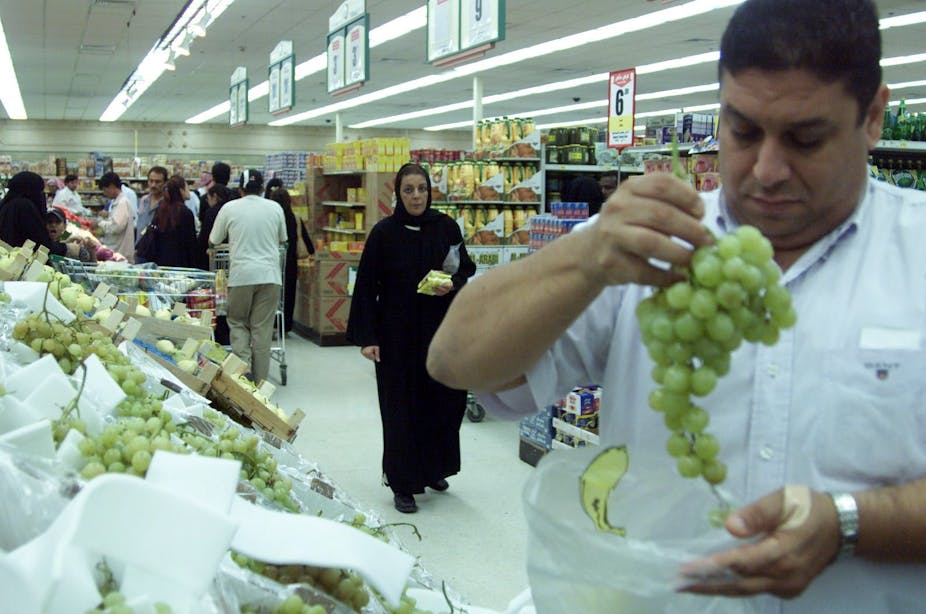In the past, when infections were the dominant form of disease and death, and humans didn’t understand how they spread, an epidemic ended when enough people had died that there were no more potential victims to infect in the vicinity of the bug. Today, with a global epidemic of non-communicable diseases – including obesity, diabetes and cancer – on our hands, we may want to rethink our strategy.
As a species we have surpassed ourselves time and again in ensuring our survival, comfort and access to large supplies of resources and energy – albeit in highly unequal measures across the globe. The global north and the global south have very different shares of energy use per capita, for example. The proof is in the cities in which all our energy needs are met in exchange for our productivity in an increasingly global economy.
But the type of productivity required of us – most of it sedentary – is out of step with our evolutionary history, characterised by scarcity.
Earn more, eat more
This is where the obesity story starts – the tipping point of this mismatch occurred a few decades ago in the West and is now happening in low and middle-income countries.
The obesity epidemic is carried through a model that thrives on our most primal need to accumulate energy and relieve survival anxiety. It leads to over-consumption relative to our physical activity and spreads even while large swathes of society still have an agricultural lifestyle. Supply chains linking rural areas to the calorie-rich, global food market are simply phenomenal. Coca Cola supply chains, for example, have been used to deliver HIV drugs because of their impressive reach in Africa.
So should we let evolution take its course and see where it gets us? If half the world’s population has to succumb to an epidemic of early-onset diabetes and premature heart attacks, perhaps that is our evolutionary destiny. Well, not quite. Some of us have begun to see beyond the trappings of survival.
In high-income countries, women who are most well-off and educated are usually at much lower risk of obesity compared to those who are poorer and less educated. We know this group tends to think differently about their future gains. They are free of concerns for immediate survival and can turn their attention to their longer term health and life expectancy with aspirations to everlasting youth and immortality.
In low-income countries, the environment is still characterised by overall scarcity and any social or economic advantage is converted into the ability to acquire energy and resources. Obesity is, generally speaking, less of a problem in these countries compared with high and middle-income countries, although it is growing. But where it is found, it still tends to be among the most well-off who display their status through a plump body-type, which signals wealth as well as reproductive capacity in women.
In middle-income countries, we are beginning to see how the change from a low-income to a high-income status occurs over time, as demonstrated in a recent study we published that compared rates of female obesity in four middle-income countries (Colombia, Peru, Jordan, and Egypt) and three low-income countries (India, Nigeria and Benin).
The picture is a little messier in middle-income countries because they are at an intermediate stage in emerging economies. But the study showed that education and wealth do very different things in relation to obesity in countries that are undergoing relatively rapid economic development and are opening to the global food market. We found that while wealth tended to increase the risk of obesity, education began to mitigate this obesogenic effect in the middle-income countries.
Although the study cannot be conclusive because of the cross-sectional nature of the data, the findings suggest that in countries where the food environment is becoming calorie-rich and where new types of products are becoming available with sophisticated marketing strategies to promote them, having a higher level of education may help decision-making around food and health.
Information hole
So can we stop the epidemic? Well, it depends not only on our individual will and ability to educate ourselves and make the decisions that serve us best, but also on the political will of our leaders to step in when the market is failing.
It is unfortunate, and a hallmark of the epidemic, that the new disease risks that characterise our societies and have superseded infections take root faster than the relevant health knowledge and understanding can spread. This creates a huge information asymmetry between sellers and consumers.
This is a serious problem in rapidly developing countries that are opening up to the global food market but don’t have public health systems to deal with these new health risks.
Supporting countries and civil society to make the most informed choices when it comes to operating in a new market is an important strategy to curb the obesity epidemic, alongside improving education levels in general.

